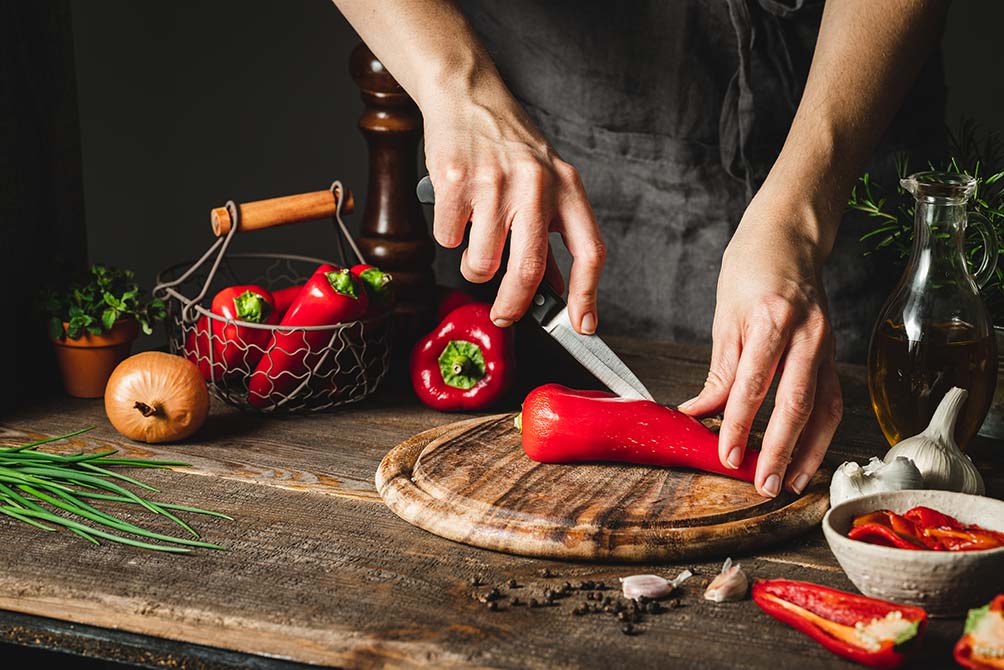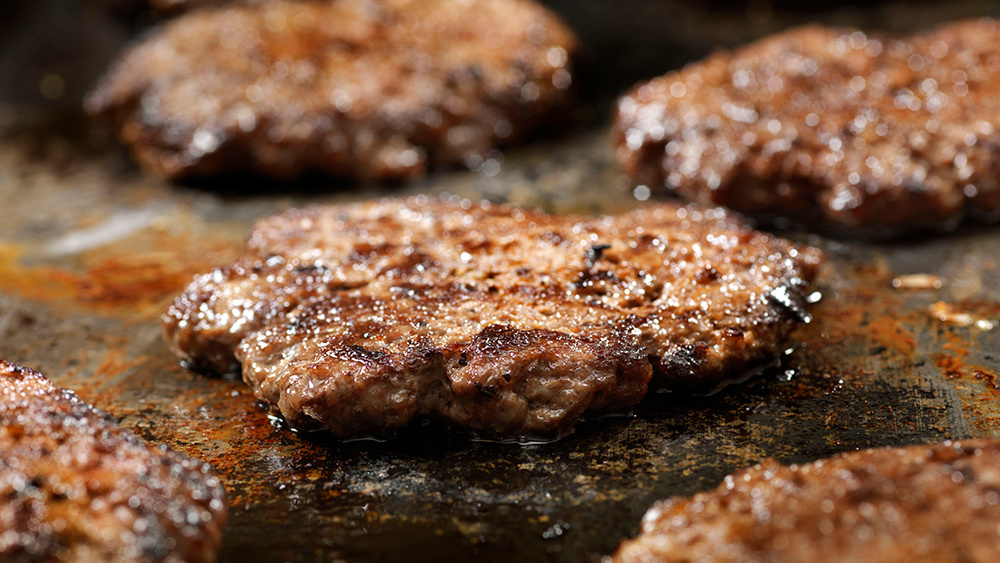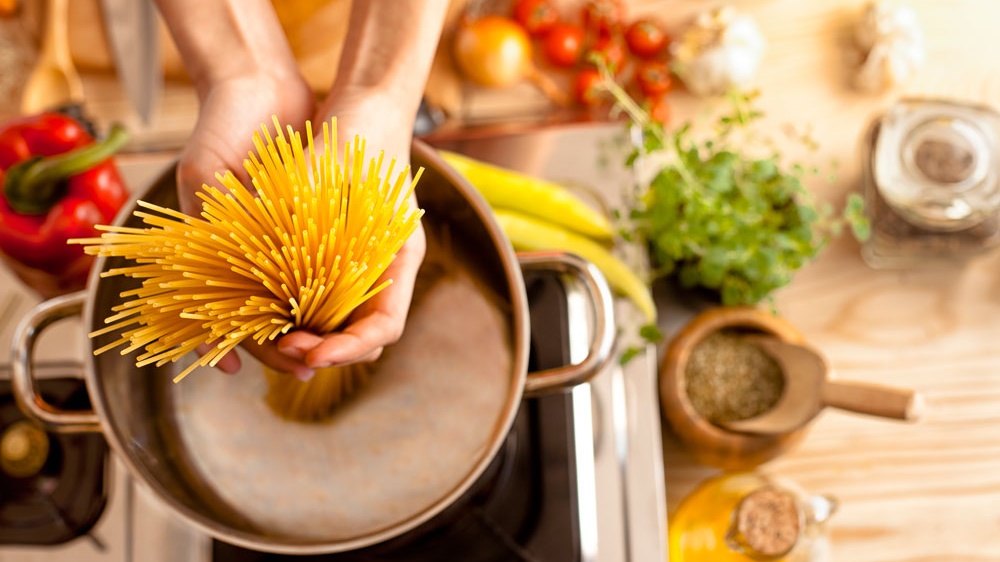Whole Unprocessed Foods

 Add to favorites
Add to favorites
You’ve probably noticed that I regularly try to convince you to eat whole, unprocessed foods. Every recipe I write uses what I consider unprocessed foods (with minor exceptions).
To keep it simple, let’s start with some definitions:
What are processed foods? Processed foods encompass most of what’s in your grocery store. Anything that has chemicals and preservatives as additives would fall into the processed foods category. By my definition, any bread in a store that has a preservative put into it would be processed food, so even if it doesn’t always come in a box, you can consider it processed.
Melanie Warner, author of Pandora’s Lunchbox, defines processed foods as, “Something you could not make at home in your own home kitchen with those same ingredients.” Makes sense to me.
What are unprocessed foods? Unprocessed foods are the things you find in the produce section, the fresh meat section, and limited parts of the dairy section. I say limited parts of the dairy section because we can’t all have a cow or goat in our backyard. We need to allow for some processed foods that are in packages or cartons. That being said, the fewer the ingredients that are there to keep them fresh for transport to the grocery store, the better. The closer your food comes to you from the farm, the better.
If you can’t pronounce it, don’t eat it. Read a few product labels and you’ll see how challenging this can be. And don’t even get me started on the false advertising that works its way onto our food labels.
Another sage saying is “Shop the perimeter.” Buy your food from the outer sections of the grocery store. That includes the produce department, fresh meat (not that deli stuff that hangs in those plastic packages), fresh flowers if you want them to decorate your table, and the freshest dairy you can find. With dairy, try to stick to the things that have a short ingredient list and don’t have enough chemicals to keep them fresh in the case until next year. Check the sell-by date.
Buy fresh. That pretty much covers it.
I bring up this subject because I came across an article about a chef named Dan Barber. Barber is an award-winning chef and partner in Blue Hill restaurant in NYC as well as the co-owner of Blue Hill at Stone Barns in Pocantico Hills, NY. As a result of the Covid-19 crisis, a lot of restaurants have closed. This puts many small farms at risk because many of them depend on that restaurant business to stay afloat.
Barber is enlisting cooks from some of the world’s top kitchens to join the Kitchen Farming Project. He’s encouraging them to get reconnected with the farm-to-table process by letting them grow food on his land to use in their restaurants. “You can’t allow the relationship between chefs and farms to disappear, for however long this moment is going to be,” Barber says.
People all over the country are really starting to appreciate and value the fresh produce that comes from local farms. You see farmer’s markets becoming even more popular; especially with rising grocery store prices. People are flocking to these markets because they understand that fresh food grown locally is better for their health. Chefs are buying more food directly from farmers. Sometimes they’ll even feature the name of the farm on their menu. Depending on where you live this might be ‘old hat.’ It might have been going on for decades now. But for many, the trip to the giant grocery store is still the only option for buying food. For others, the big franchise restaurants are still the biggest game in town. While I love going out to eat, I feel bad about the many small restaurants that had to close in 2020. We have to get back to supporting small restaurants owned by individuals. But the trend I’m talking about is growing. Thank goodness!
I had this idea about 20 years ago that I never got to implement. I wanted a sheep farm. I wanted to locate my sheep farm on about 100 acres south of Madison, Wisconsin. I was actually pursuing the idea enough that I’d drive about 45 minutes south of Madison along the rolling hills that border the I-90 corridor, looking for an ideal location to put a sheep farm. I even read books on how to birth sheep. I visited two huge sheep farms, one in upstate New York and one in Washington State, working toward my dream of building a sheep farm.
It’s odd to have a sheep farm in Wisconsin. Wisconsin is the land of cows and corn. Why sheep? Maybe it is my Irish heritage. I’m in love with sheep. I love the noises they make, the shape they are, the size, and I love the cheese that comes from sheep’s milk. I was totally ready to do the sheep thing and learn how to make sheep’s milk cheese. That was going to be my sheep production involvement. And of maybe some butchering. (Well, maybe I’d hire that out.)
The sheep farm I planned didn’t need the full 100 acres. My plan was to lease out the surrounding acres to organic farmers. Then I was going to help sell the produce to Chicago restaurants. That’s why I was looking where I was. I wanted the transportation of the produce to be simple. Go down I-90 and deliver all this fresh produce and my sheep/lamb products to Chicago.
That idea was in my head long ago when that form of restaurant supply was very new. At that time Alice Waters of Chez Panisse in California, and a few other cutting-edge chefs were growing their own produce and sourcing their meat and produce totally locally. I wanted to do my thing; only with sheep. Alas, I was too busy running my other company to get my sheep farm together. Now that I have developed Plan Z, I am approaching the whole food trend from another perspective; that of teaching you how to make delicious whole food recipes and encouraging you to spend the majority of your grocery budget on fresh, whole, unprocessed food.
Cheers,

Nothing found.
Smash Burgers
ZS-5 Ingredients or Less,ZReboot,Featured Posts,ZSpecialties,Recipes
Smash burgers are all the rage. Step into a brew pub and you’ll likely find a smash burger on the food menu. These are NOT the huge, 8oz burgers we’ve been fed in the past. These are a thinner burger…
Nothing found.
Who Invented St. Patrick’s Day?
I always knew I was of Irish descent, but I never really knew HOW Irish I was until I got my 23 n Me results back.
Kitchen Hacks for Enjoying Lower Carb Pasta Meals
Enjoy your pasta; just don’t do it too often. Follow hints like this and you’re much less likely to gain weight.
8 Comments
Add comment Cancel reply
You must be logged in to post a comment.






Can you eat kohl rabbi on ZReduction?
Yes you can! This is a newly approved food. Since it is new, I would recommend treating it as a caution item in ZReduction.
wow, this brought back memories of my childhood farm life. WE HAD SHEEP… we used to wrangle the bucks and go for a whooping ride till thrown off!! Loved to help dad in springtime with the birthing of lambs…hated to see them go to market tho…shearing time was a riot, these fat, wool laden creatures were shorn with a shaver that sliced it off like butter, they would run away when they were done like embarrassed naked old ladies!! Memories…..
I could not have said it better myself.
I am 17 days into reduction. Today I saw a TV show that had tomato soup and all of a sudden I was hungry for tomato soup. I sat there trying to think of a way to add sweetness to the acidity of the tomato when I thought of my gala apple. So there it was. Sweet, spicy tomato soup and it was FABULOUS. The spice was provided by some powdered ancho chile powder. I still love the flavor of “sweet” but now I am finding new ways to get there without adding sugar and sugar products. Apples can be my new sweetener. Who knew?
I’m at day 21. Does anyone else experience on/off severe mood swings? Today, I was in a funky rage like mood. Hope this passes soon. Since I have a hard time liking myself when I’m like this, I can only imagine how it affects those around me. Feedback, please.
Sheila: most folks report being in a better mood while on the diet… so there are a few things to monitor in case they are affecting you. One is the caffeine intake. you will be more susceptible to caffeine now that your system is cleaning out. by day 21 you are done detoxing so you might just be going through a bit of a ‘woe is me, i’m on a diet’ mood swing. Try to concentrate on the scale data. Hopefully physically you are feeling better even if for the moment you are not feeling better emotionally. Try taking a walk in the fresh air. That might help too. Zola
Thanks for the feedback. Yes, I’m feeling better physically so will try to concentrate on that & the weight loss. I did get outside & worked in the yard yesterday; that helped. Another ?? if I have a cup of beef/chix broth, is that my protein for that meal?